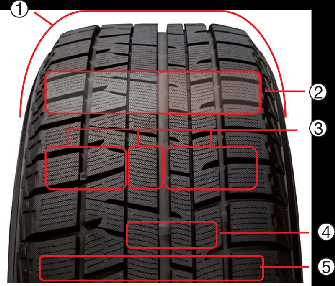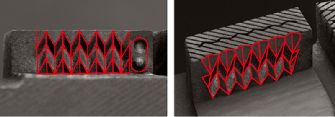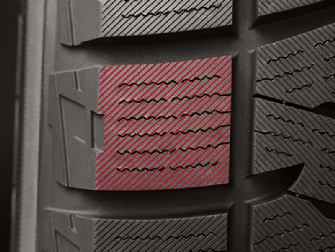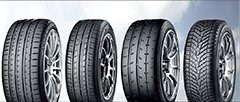1: Compound
2: Water Film
3: Ice Surface
4: Absorptive Balloons
YOKOHAMA´s water absorbing technology
The layer of water above the ice is the biggest contributor to loss of traction. It causes "mirco hydroplaning" on icy surfaces. YOKOHAMA´s original compound technology incorporates water-absorbing compounds, putting the tyre in contact with the actual ice.
Absorptive tread compound
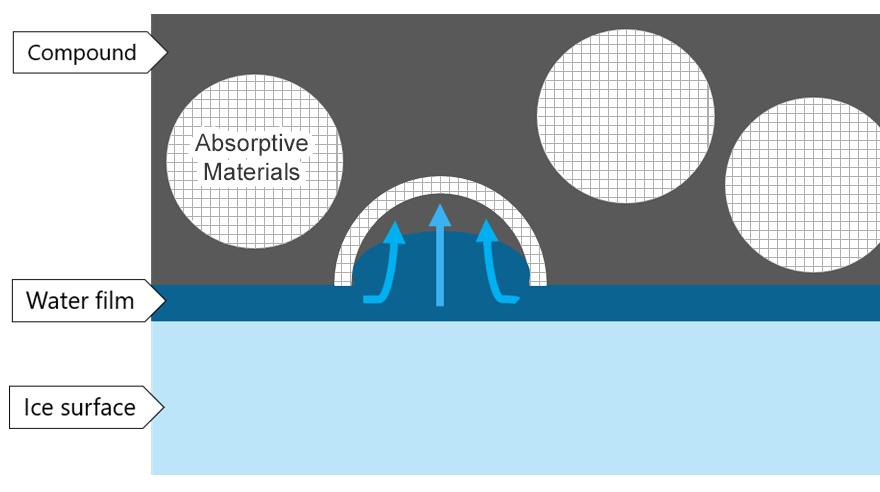
Tread Pattern and Construction Technologies
1) Anti Energy-Loss Profile
Delivers a fuel saving performance and stability by controlling a deflection of the tyre.
2) Asymmetric Tread pattern design
Inner zone, an effective tread pattern area for ice performance, has more actual contact area and more sipes than outer zone in order to maximize the friction and edge effects on ice surface.
Outer zone, an effective tread area for snow performance, has more grooves in order to maximize the traction and edge effects on snow surface.
Delivers a fuel saving performance and stability by controlling a deflection of the tyre.
2) Asymmetric Tread pattern design
Inner zone, an effective tread pattern area for ice performance, has more actual contact area and more sipes than outer zone in order to maximize the friction and edge effects on ice surface.
Outer zone, an effective tread area for snow performance, has more grooves in order to maximize the traction and edge effects on snow surface.
Tread Pattern and Construction Technologies
3) Triple 3-D dimple sipes / Triple 3-D sipes
2 types of original 3-dimension shaped sipes are varied to get suitable effects and balances on each tread area. The surfaces of 3-D sipes avoid uneven deflection of blocks by supporting each other. It delivers excellent ice and snow performance with its maximized actual contact area and edge effects.
2 types of original 3-dimension shaped sipes are varied to get suitable effects and balances on each tread area. The surfaces of 3-D sipes avoid uneven deflection of blocks by supporting each other. It delivers excellent ice and snow performance with its maximized actual contact area and edge effects.



